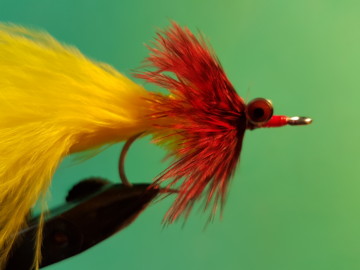Posts Tagged ‘lake’
{{start}}
{{end}}

{{+1}}Redfin in Jindabyne, Eucumbene & Tantangara ????{{-1}}
{{start}}
Here is an interesting email from Steve Samuels that I wanted to share with you. Redfin are prolific breeders and carnivores ... if the right precautions are not in place, with no chance of mishap, their numbers will quickly out-compete trout for food and as soon as they get to any size they have the predisposition to eat trout fry and fingerlings.{{end}}
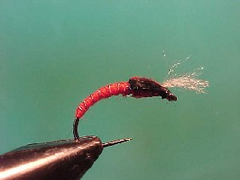
{{+1}}Chatto’s bloodworm alpine buzzer{{-1}}
{{start}}
This is the first in the series of three versions of the same fly and is representative of the original bloodworm colour of the pupa as it emerges from the slime on the lake bottom. The second fly in the series is black with flashes of red representing the pupa as changes to a dark colour with varying amounts of red present as the transformation occurs. The third fly in the series is representative of the colour of the pupa as it reaches the surface the dark colour mellows and the pupa assumes a grey or olive colour similar to its terrestrial colour.{{end}}

{{+1}}Foam cicada – Chatto’s ‘black prince’{{-1}}
{{start}}
This fly sits well into the surface film like the natural and has a very realistic profile when viewed from below. I have made it smaller than the natural on purpose as flies tied as big as the natural are frustratingly cumbersome to cast on #8 weight outfits that are my preference of the target species mentioned above. The fly lands with a good audible fish attracting 'plop' and with its outstretched wings that are only about half as long as the natural still wiggle with the slightest movement in a very enticing way.{{end}}

{{+1}}Bass teaser{{-1}}
{{start}}
If you make the hook light enough and the wing long enough this fly swims hook point up making it quite snag resistant. It swims well and when fished with a twitching movement on either dry or sinking lines it has plenty of movement and of course being relatively compact it's not a fly that will result in a lot of short takes.{{end}}
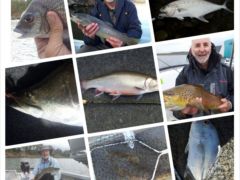
{{+1}}Trout – preparing for an extended trip{{-1}}
{{start}}
My travel/ backup fly fishing kit that will act as: A travel fishing kit that can stowed in my van or car to cover those situations when on the road we decide to have an un-programmed stop and a fishing opportunity presents itself. A backup when fishing from either of my boats or from other boats in fishing competitions{{end}}
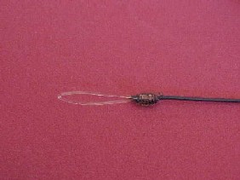
{{+1}}Leaders – #8 weight for estuary and native species{{-1}}
{{start}}
This is the set up I use for my #8 weight fly rods when boat or bank fishing for the likes of Bass, Sarratoga, Yellowbelly, Silver Perch, Mangrove Jacks, Redfin, smaller Barra and smaller Cod.{{end}}
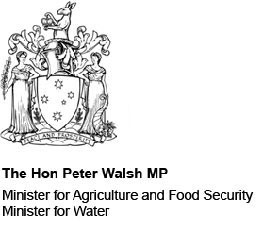
{{+1}}Operation Tempus … awareness about VIC fisheries regulations.{{-1}}
{{start}}
Operation TEMPUS, a major enforcement operation on Corio Bay, begins today to ensure all commercial and recreational fishers are aware of Victoria’s fisheries regulations and are obeying bag limits and legal catch sizes.{{end}}
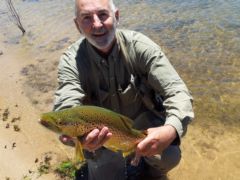
{{+1}}Snowy Mountains fishing report December2013{{-1}}
{{start}}
Fishing in the Snowy region is often tough at this time of the year but if you put the time in and fish well you will find fish
My suggestion for Tantangara is to concentrate your efforts loch style fly fishing the Tantangara hot spots.
For Eucumbene polaroiding the rocky and timbered shores and back waters is a good option and if loch style fly fishing is you go fish into structure and accept that a few lost flies on snags will be a small price to pay for a brown or two.
 |
 |
 |
On my door step loch style and shore based prospecting in Lake Jindabyne has been tough and the bait fishers have been struggling too. Trolling has fared a little better and there are a few fish mainly rainbows being taken by trollers at around 8 meters. These fish are probably daphnia feeders. For fly fishers fortunately there are a few fish to target (with the aid of polaroid sun glasses) close to structure on shores. These browns are patrolling and actively feeding around shore structure and in my view these are the fish you should target.
I guess we are lucky to have some fly fishing options ... the consensus of reports that I am getting indicate that fishing in Tasmania and right up the eastern seaboard has been tough over recent times. I think that probably somewhat comes down to changing weather conditions. Terrestrial insects like hoppers and beetles as well insects that spend part of their life cycle in the water such as midge, mudeyes, mayflies and damsels could all be forgiven for being unsure of what season they are in. It seems these days that every time we have a run of a few warm days and insects start to appear nature chucks a wobbly and give us harsh weather that either turn off or kills the insects.
Water management in the Snowy region is one of the keys to the quality of local fishing. The lake water levels are not determined by Snowy Hydro but they do play an important role and I am confident that they do their job well within the parameters that are set for them.
Just to set the records straight here is some additional information taken from the Snowy Hydro web site that describes their role.
“Snowy Hydro Limited is a business providing a complex array of financial hedge and insurance products to participants in the National Electricity Market (NEM). We are the leading provider of peak, renewable electricity to the National Electricity Market and a fully integrated Australian energy business with an excellent track record in financial performance, engineering innovation, workplace culture and business practices.
Some important facts about Snowy Hydro are:
• Snowy Hydro does not own the water it releases in the course of electricity generation, the NSW Government does;
• Snowy Hydro does not own or control the release of water to the irrigators. Release is controlled by the NSW Government and by the Murray Darling Basin Commission;
• Snowy Hydro can not store water. The Company has to release a prescribed amount of water each year and this is determined by its Water Licence issued by the NSW Government;
• Snowy Hydro is not a State Owned Corporation, even though it is owned by the three Governments. Since corporatisation in 2002 it operates as a Corporations Act company. Its borrowings are not guaranteed by Governments and it has no access to additional equity other than from the Government owners;
• Snowy Hydro is less a generator of electricity and more a provider of price risk financial hedge contracts to the electricity industry.”
Currently it seems to me that it's the NSW, ACT and Victorian governments determine water flows based on hydro generation requirements, irrigation requirements and environmental flow requirements. If we could get them to give greater consideration the effect of water levels have on fishing and in turn the effect recreational fishing has on tourism in the Snowy region and the wider economic viability of local communities I find myself wondering how much better off our fisheries would be.
{{end}}














